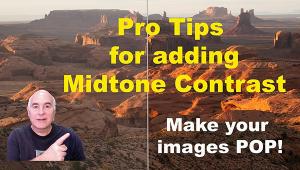I carry 14-24 2.8, 24-105mm macro and 50mm 1.8. 105 macro, most the time. Plus a 70-300mm 5.6, next purchase 24-70 2.8.
Please comment briefly on what you see as the advantage of a fast prime lens.
- Log in or register to post comments

I always have my Nikkor 50mm f/1.8 with me. I like it a lot more than any super zoom lens I've used. During a recent trip to Michigan's UP I used my 50mm almost exculsivley. I love the wide apeture even though your stuck at one focal length.

I use 24mm f-2.8 wide, 50mm f-1.4 normal, and a 100mm f-2, moderate telephoto. Those were my fast prime lenses during the era of film. I had a camera body for each lens, and back then, the muscle to run around all day with this gear swinging from my neck, including my trusty potato masher type flash and its battery pack. I was young, and yes, the images those lens produced when used wide open were soft and dreamy, but that was the flavor of the day anyway, especially for weddings, which was 90% of my workload. My first zoom lens was a Vivitar Series 1, 70-210, f-4. It was a fine lens. It was also very large and heavy compared to what I was used to hauling, so it didn't see much action as a wedding lens. It did become my favorite general purpose optic for the ease of framing it provided, and it did make a favorable impression that just screamed professional photographer. Yeah baby, people took notice when you whipped that big boy out of your camera bag. Slap a deep rubber lens shade on the front for maximum effect and folks would start walking and sometimes running toward you wearing that photogenic twinkle in their eyes that says, take my picture please. Today my gear is based around one camera body and a 10-22 wide angle zoom that I use for 80% of my photography. The other 20% is handled by a 50mm f-1.4, and a 100mm f-2.8 macro, and my trusty, but least used, 70-200mm f-2.8L. Lens wise, things haven't changed that much for me, except that they are generally smaller, lighter, and sharper optics than was available when I first got hooked on photography.

Zooms are great for convenience but you can't beat a good fast, sharp prime. It is also much lighter and smaller and the ability to have shallow depth of field is the clincher. It can also be a good discipline to be restricted to one fixed focal length and to have to compose within its limitations.

The optical quality of the prime lens is far superior to that of any zoom. Color and contrast are better. The slight inconvenience of needing to move my feet to best utilize these features is well worth the price and the extra weight.

I don't own any high ratio (18-200, etc.) zooms because the slow speed and optical quality compromises are too great for my work. I still regularly use 85 f/1.8 and 35 f/2 among others on my Pentax digital SLRs for a lot of professional work.

































